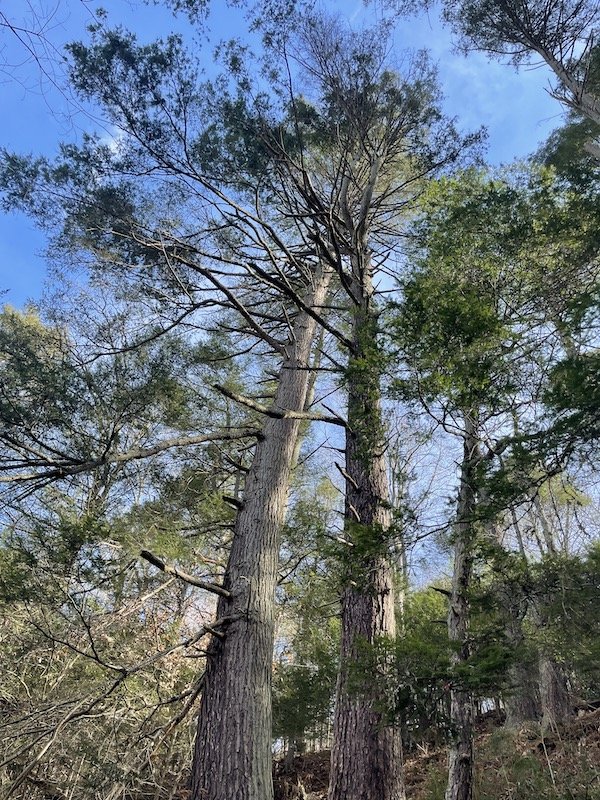Hemlock Overlook
50 years is a mere dash on the timeline of an ancient hemlock…
By Brian Kane, Mid-Atlantic Regional Manager
I was about 75 pounds, and carried the required 35-pound backpack on my first Webelos (pre-Boy Scout) camping trip near the Occoquan River in southern Fairfax County, Virginia. I remember being both excited and later very wet, as the troop hiked into a forest where we were to set up camp. I was proud that I knew how to pitch a tent with my buddy, and was excited to drink water from my newly purchased canteen. A heavy downpour soon began, followed by an announcement from our troop leader that we would need to move since we were in the wrong campsite. So, we packed up drenched tents and clothes (my backpack and tent now felt like 80 pounds) and relocated our campsite. The rain stopped by evening and we managed a fire, cooked dinner of some sort and fell asleep in those woods before birdcall awoke us to a day of hiking under the dripping green canopy overhead.
Five decades later, I returned a mile or so upstream from the Occoquan to honor the old-growth Eastern hemlocks that emerge from steep rock embankments of Bull Run. Infants when the Declaration of Independence was signed, the hemlocks and have watched the swift waters of Bull Run flow south for more than two centuries, through the Civil War’s bloody battle here, through the timbering or neighboring hardwoods, through drought, tropical storms, blizzards and dependably slow humid summers of northern Virginia. They face north and their flares are surrounded by boulders protruded from the slopes. It is nearly impossible to walk through them, and their branches extend over the trail to the edge of Bull Run, and shade the present day hikers. The hemlocks appear to have been spared disease, a remarkable feat in this era of the wooly adelgid decimating hemlock stands throughout the mid-Atlantic states. They are rare in this part of Virginia, a few miles south of Washington, D.C., and even rarer is that they were spared timbering that removed most of its forests for agricultural purposes. And so, the Old-Growth Forest Network recognized their significance this April for their longevity, endurance environmental benefits to the natural community.
My life is just a one-fifth tick on the timeline of these Eastern hemlocks. I treasure this space in a regional park of 425 acres of forest along a Potomac tributary with a few reminders of the past, including remnants of the region’s first hydroelectric dam. The dense tree canopy, irregular terrain and rushing waters delight me in the context of a county that has witnessed explosive growth since my childhood – more than 700,000 new residents since I hiked wet and determined on my first campout. The aptly named Hemlock Overlook is sacred to me as it allows me to breathe in the sweet, damp life of a forest, calming my spirit.


